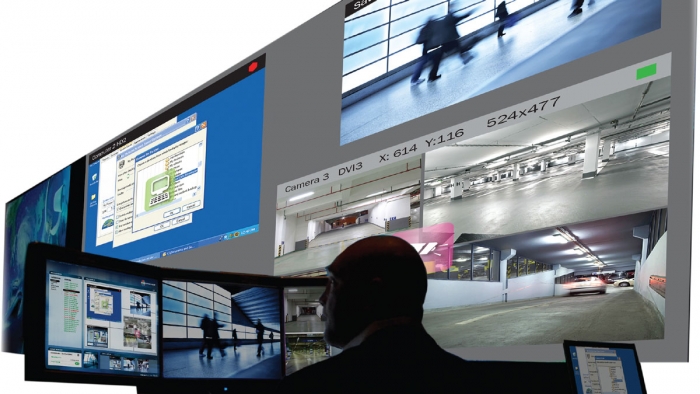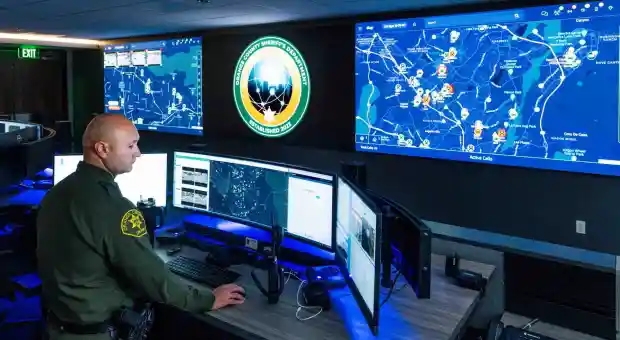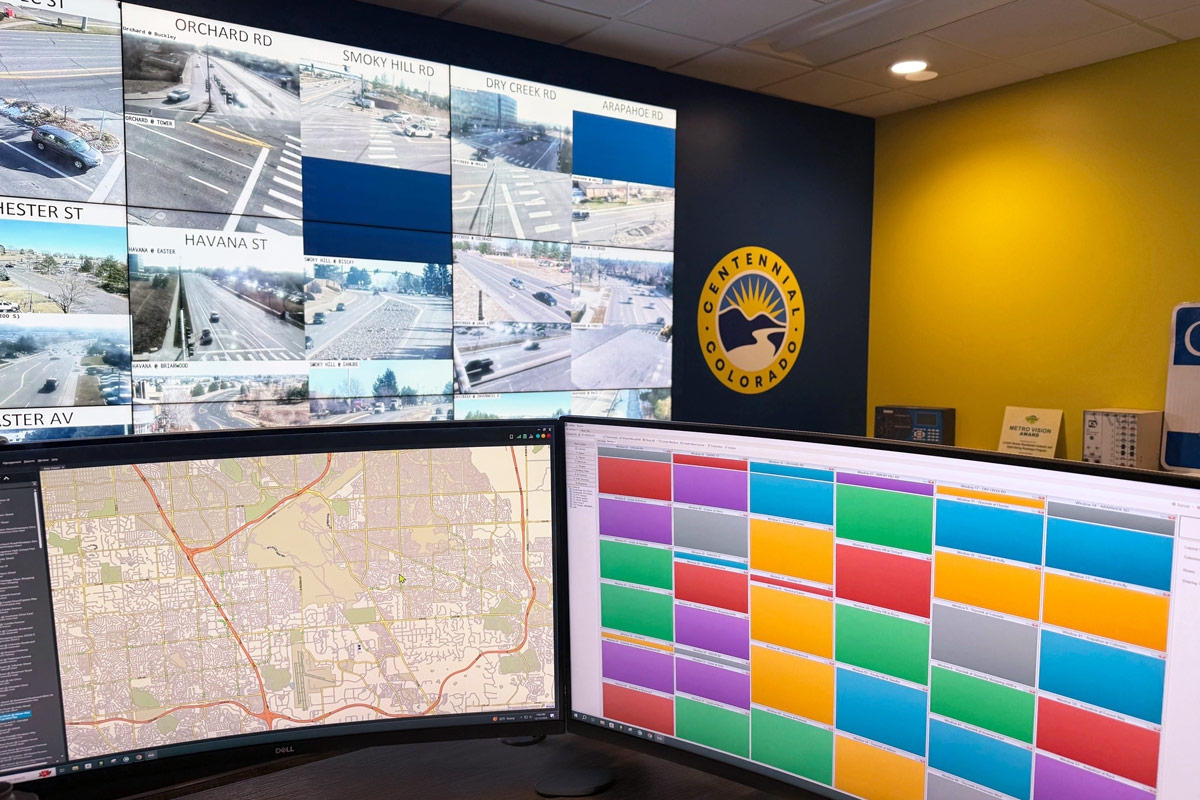RGB Spectrum Releases New Control Room Management System
RGB Spectrum, a leader in videographic processing technologies, releases its MultiPoint™ Control Room Management Solution (MCMS) Version 2.0. The system addresses the requirements of control rooms and operation centers, including NOCs, TOCs, SOCs and EOCs. The system significantly improves a control room personnel's ability to display, manipulate, and act on data in increasingly information-rich environments.
MCMS offers HD resolution at full frame rates, making it ideal for mission-critical, real time display processing. It also offers KVM functionality with resource arbitration, intuitive system navigation, and compelling security features. MCMS builds on the success of RGB Spectrum's MultiPoint KvM TM system and offers expanded functionality, with an improved user interface and integrated display wall control.
"MCMS is designed to display any source anywhere in the control room and manage it from any position", says Arndt Schrader, Product Marketing Manager. "Since we're combining DVI level switching, embedded display processors, and an IP control layer, we can offer uncompromised image quality and IP intelligence in a single solution."
Besides unparalleled video performance, MCMS offers a variety of other advantages. It provides a single control interface for each operator, allowing applications running on different computers to be accessed and displayed. In a security operations center, for example, the video management system, entry control, elevator control, and office applications, usually distributed across various computing resources, can be displayed in an integrated, multi-monitor pixel space, and accessed with a single keyboard and mouse. "You can also think of this as a multi-computer, multi-OS expanded desktop on steroids", said Arndt Schrader. "This beats the alternative of integrating various software applications at the software level, which can be very expensive, if possible at all, and difficult to keep up to date."
The new GUI simplifies system operation by offering drag-and-drop window selection capability. It also offers operators the ability to control both a shared display wall and their local displays from the same interface. This includes window positioning, preset selection, and KVM control of the computers displayed. The operator's GUI presents a replica of the actual wall display and offers live thumbnail updates. This allows operators to quickly familiarize themselves with the features and focus on the task at hand.
Multiple operators can share computer resources via an arbitration mechanism, offering "control", "view only", and "no access" privileges. Hierarchical and peer based transfer of control are supported. Hierarchical arbitration may be used in military or EOC environments, as it allows implementation of the formal command structure. Peer based transfers may be used in small and medium sized security or transportation control rooms, where verbal handoffs are commonly used. Operators can also share control of the display wall, allowing them to either simultaneously work on sections or share the entire display wall surface.
MCMS includes KVM control without adding software to controlled computers, which is often a security concern. This is accomplished via an External Desktop Agent (EDA), an external device running a keyboard and mouse emulator. The EDA is built to the stringent security requirements of government and military organizations and is also suitable for commercial use. The device is connected to the network in line at the back of a computer and converts MCMS control signals simulating keyboard and mouse events over the computer's PS/2 or USB ports. An added benefit is that controlled computers can be on multiple, physically separate networks, if needed.
MCMS is not just an enhancement over what came before; it offers a new level of collaboration, effectiveness, and efficiency for the mission-critical control room.
RGB Spectrum, a leader in videographic processing technologies, releases its MultiPoint™ Control Room Management Solution (MCMS) Version 2.0. The system addresses the requirements of control rooms and operation centers, including NOCs, TOCs, SOCs and EOCs. The system significantly improves a control room personnel's ability to display, manipulate, and act on data in increasingly information-rich environments.
MCMS offers HD resolution at full frame rates, making it ideal for mission-critical, real time display processing. It also offers KVM functionality with resource arbitration, intuitive system navigation, and compelling security features. MCMS builds on the success of RGB Spectrum's MultiPoint KvM TM system and offers expanded functionality, with an improved user interface and integrated display wall control.
"MCMS is designed to display any source anywhere in the control room and manage it from any position", says Arndt Schrader, Product Marketing Manager. "Since we're combining DVI level switching, embedded display processors, and an IP control layer, we can offer uncompromised image quality and IP intelligence in a single solution."
Besides unparalleled video performance, MCMS offers a variety of other advantages. It provides a single control interface for each operator, allowing applications running on different computers to be accessed and displayed. In a security operations center, for example, the video management system, entry control, elevator control, and office applications, usually distributed across various computing resources, can be displayed in an integrated, multi-monitor pixel space, and accessed with a single keyboard and mouse. "You can also think of this as a multi-computer, multi-OS expanded desktop on steroids", said Arndt Schrader. "This beats the alternative of integrating various software applications at the software level, which can be very expensive, if possible at all, and difficult to keep up to date."
The new GUI simplifies system operation by offering drag-and-drop window selection capability. It also offers operators the ability to control both a shared display wall and their local displays from the same interface. This includes window positioning, preset selection, and KVM control of the computers displayed. The operator's GUI presents a replica of the actual wall display and offers live thumbnail updates. This allows operators to quickly familiarize themselves with the features and focus on the task at hand.
Multiple operators can share computer resources via an arbitration mechanism, offering "control", "view only", and "no access" privileges. Hierarchical and peer based transfer of control are supported. Hierarchical arbitration may be used in military or EOC environments, as it allows implementation of the formal command structure. Peer based transfers may be used in small and medium sized security or transportation control rooms, where verbal handoffs are commonly used. Operators can also share control of the display wall, allowing them to either simultaneously work on sections or share the entire display wall surface.
MCMS includes KVM control without adding software to controlled computers, which is often a security concern. This is accomplished via an External Desktop Agent (EDA), an external device running a keyboard and mouse emulator. The EDA is built to the stringent security requirements of government and military organizations and is also suitable for commercial use. The device is connected to the network in line at the back of a computer and converts MCMS control signals simulating keyboard and mouse events over the computer's PS/2 or USB ports. An added benefit is that controlled computers can be on multiple, physically separate networks, if needed.
MCMS is not just an enhancement over what came before; it offers a new level of collaboration, effectiveness, and efficiency for the mission-critical control room.
RGB Spectrum is a leading designer and manufacturer of mission-critical, real-time audio-visual solutions for a civilian, government, and military client base. The company offers integrated hardware, software, and control systems to satisfy the most demanding requirements. Since 1987, RGB Spectrum has been dedicated to helping its customers achieve Better Decisions. Faster.™


